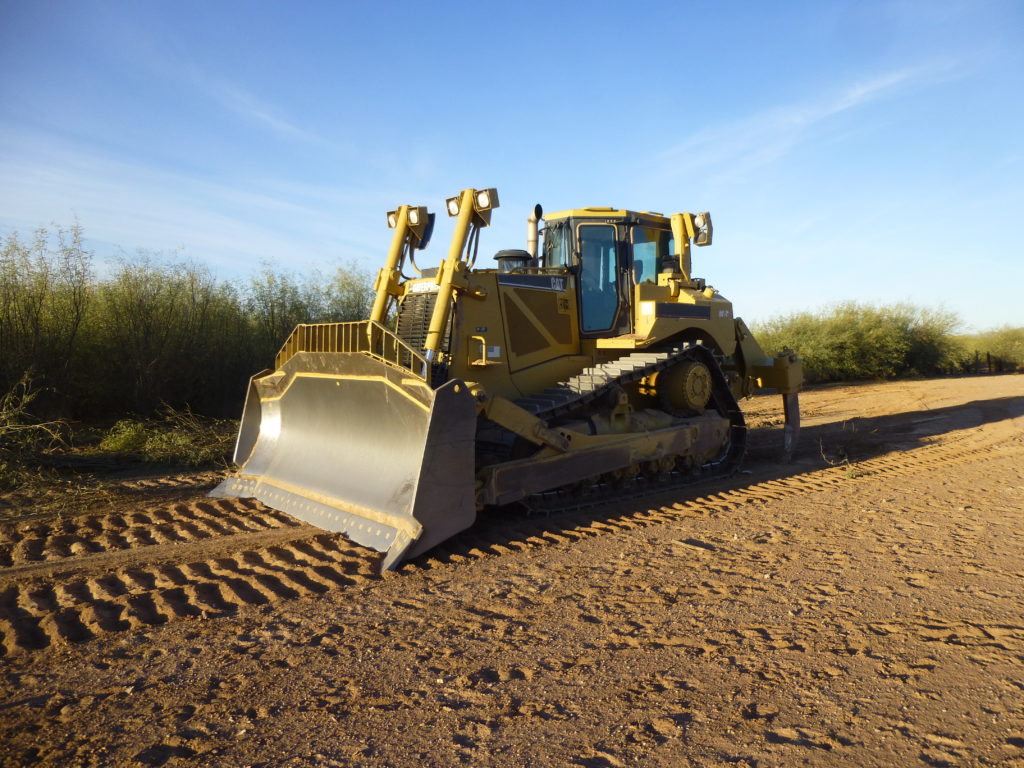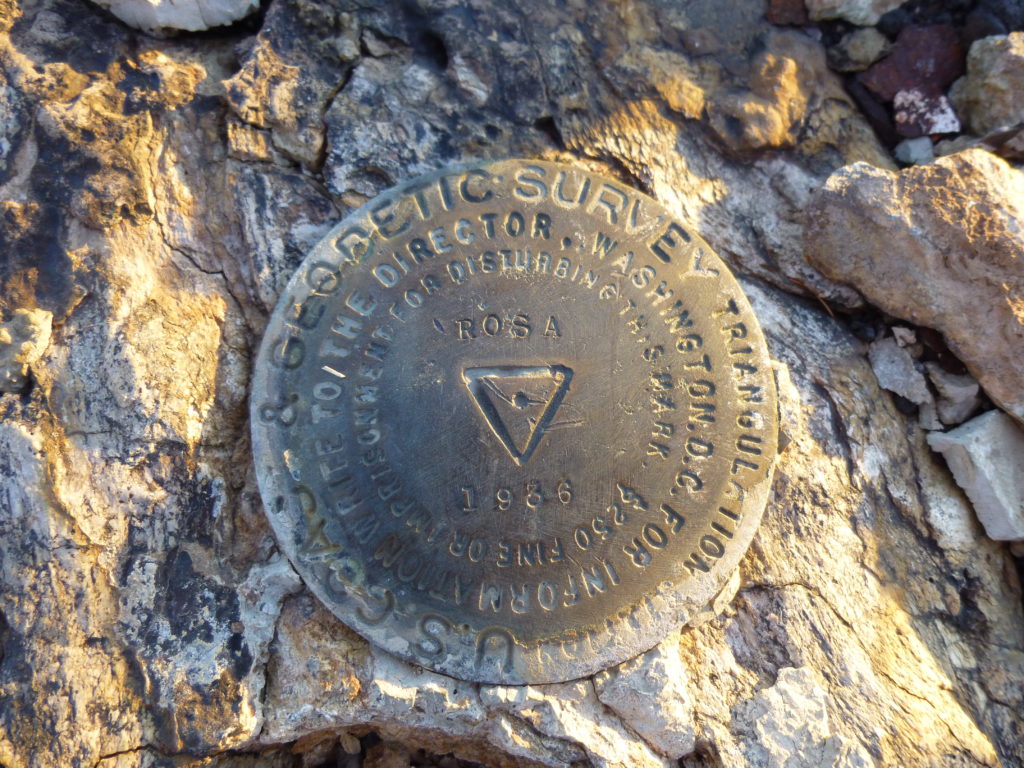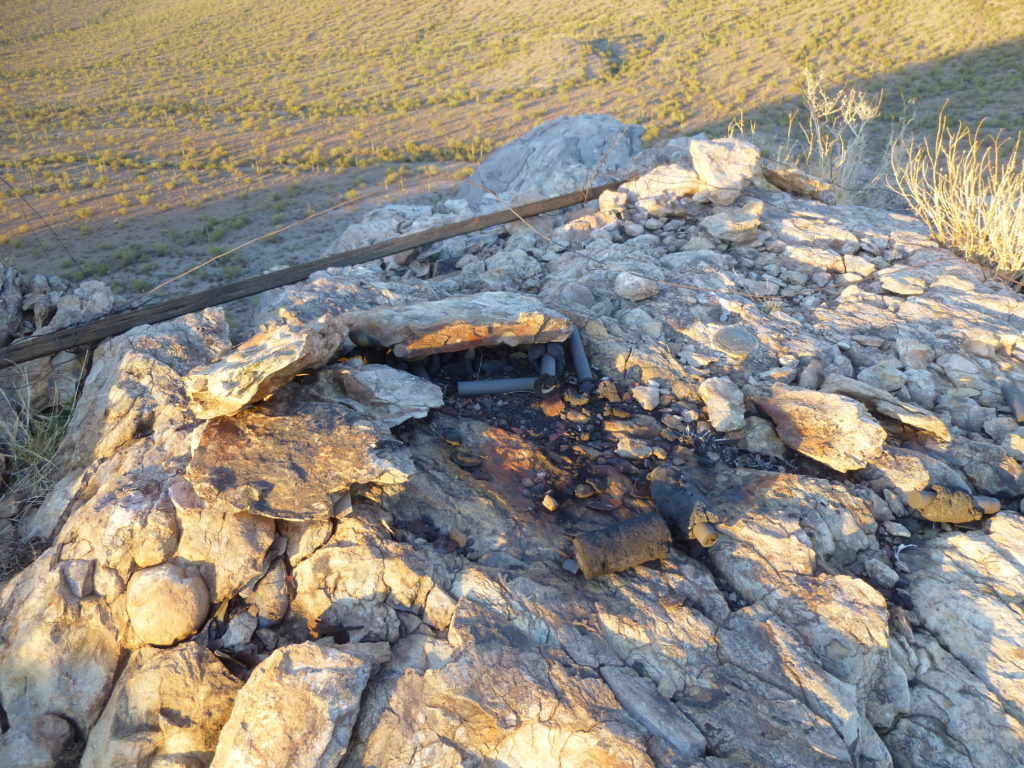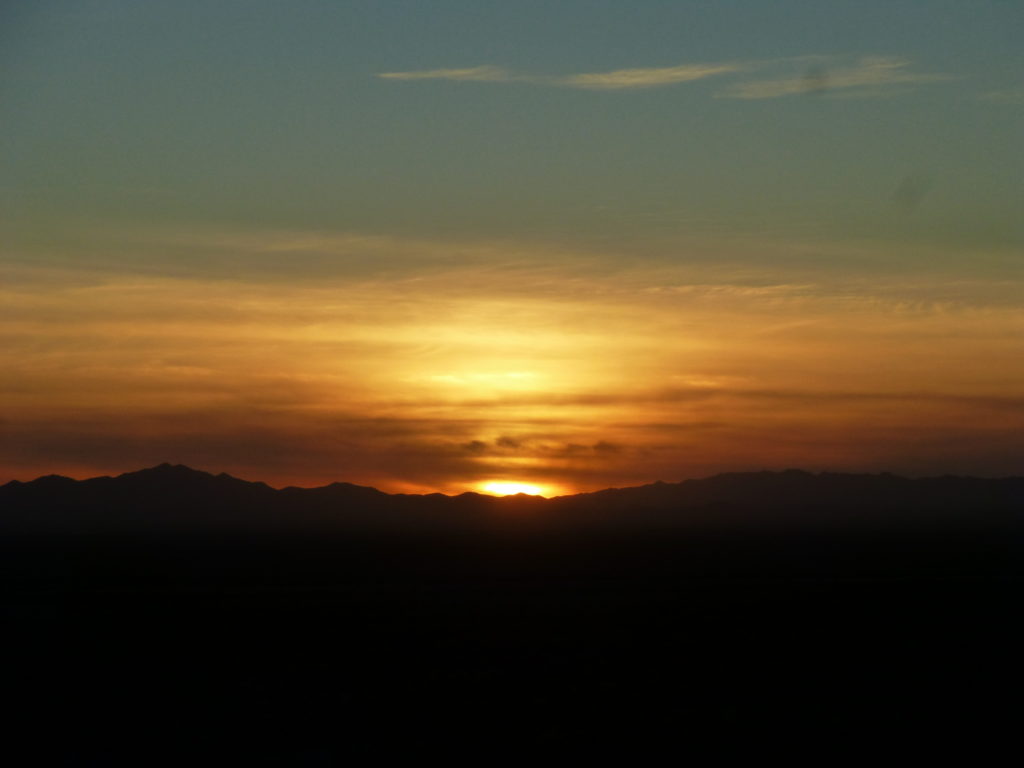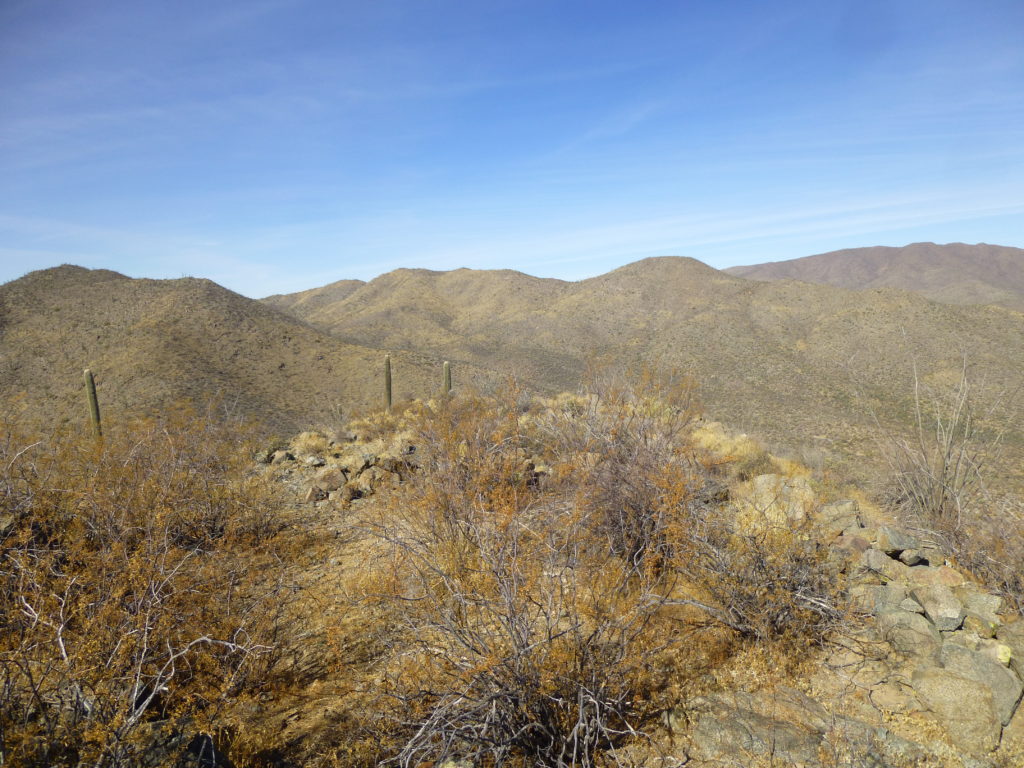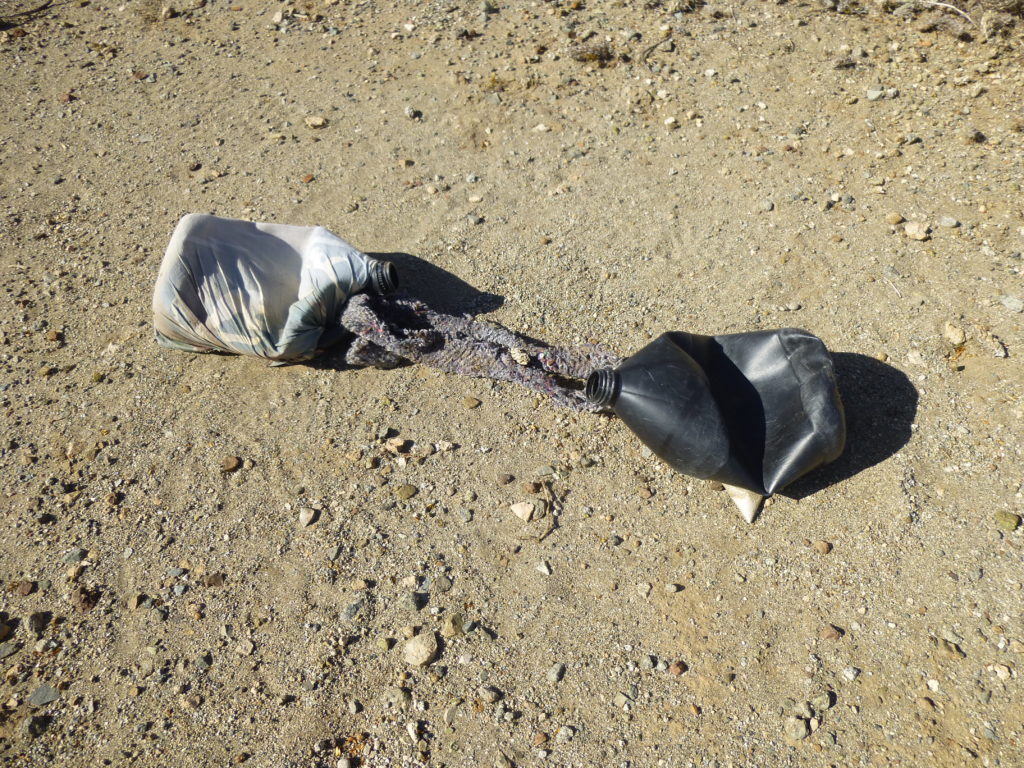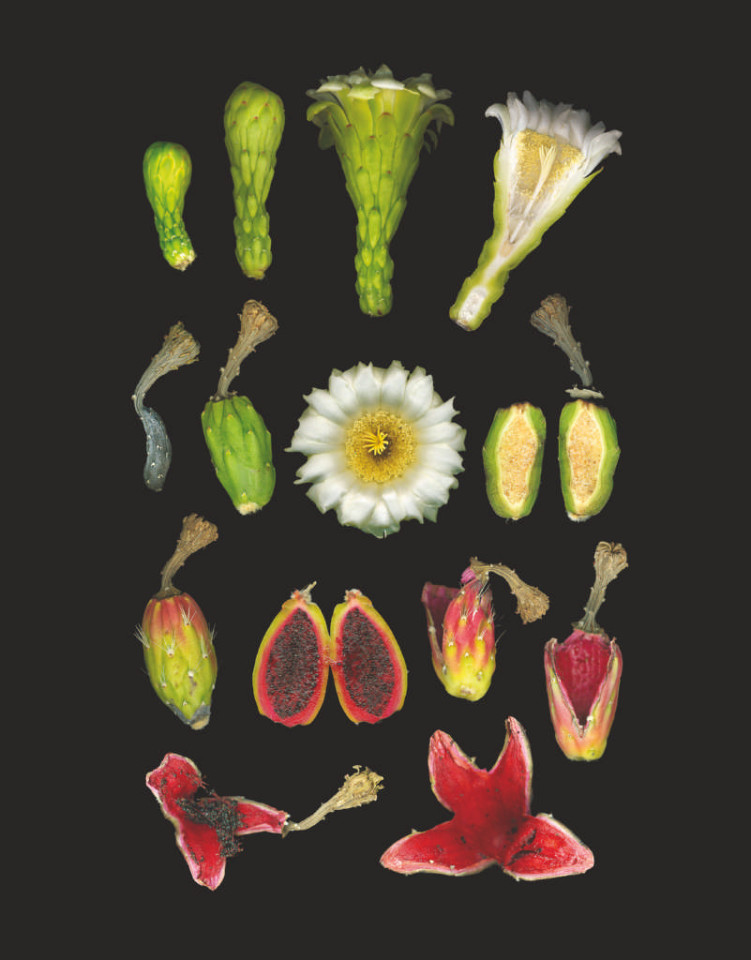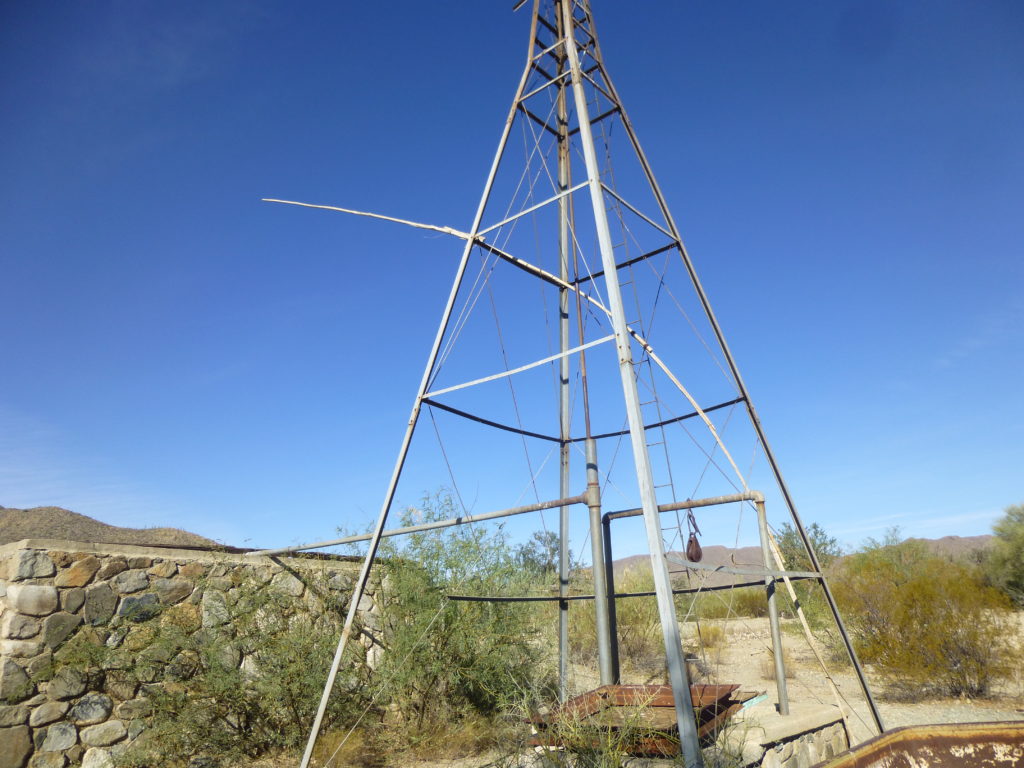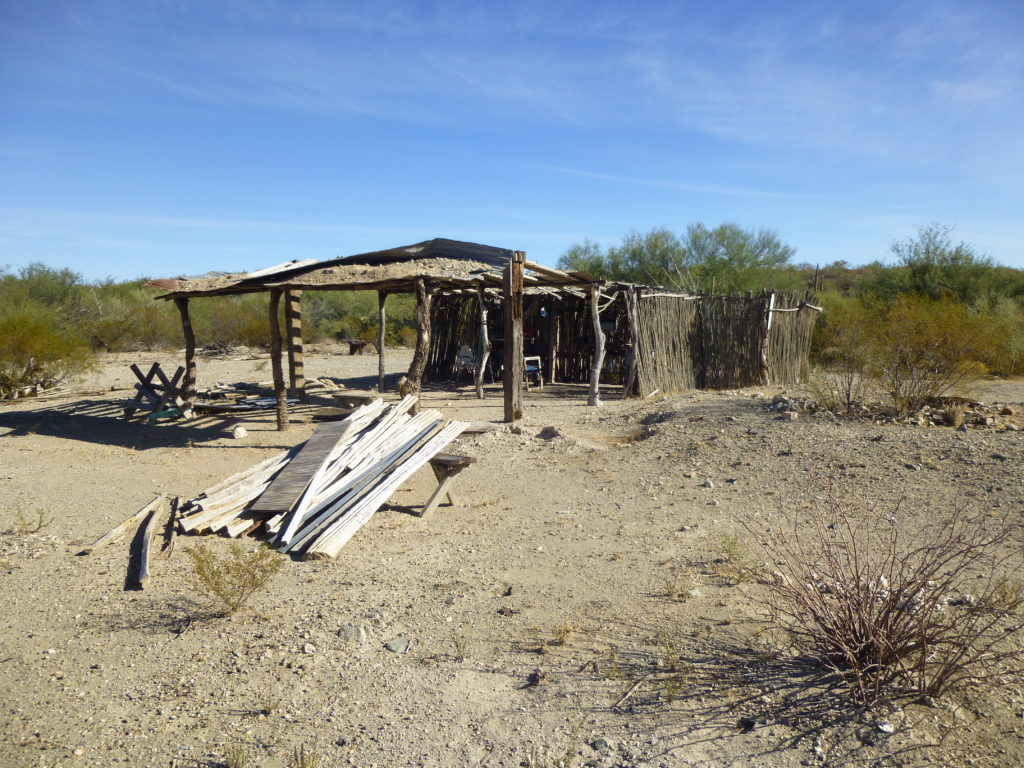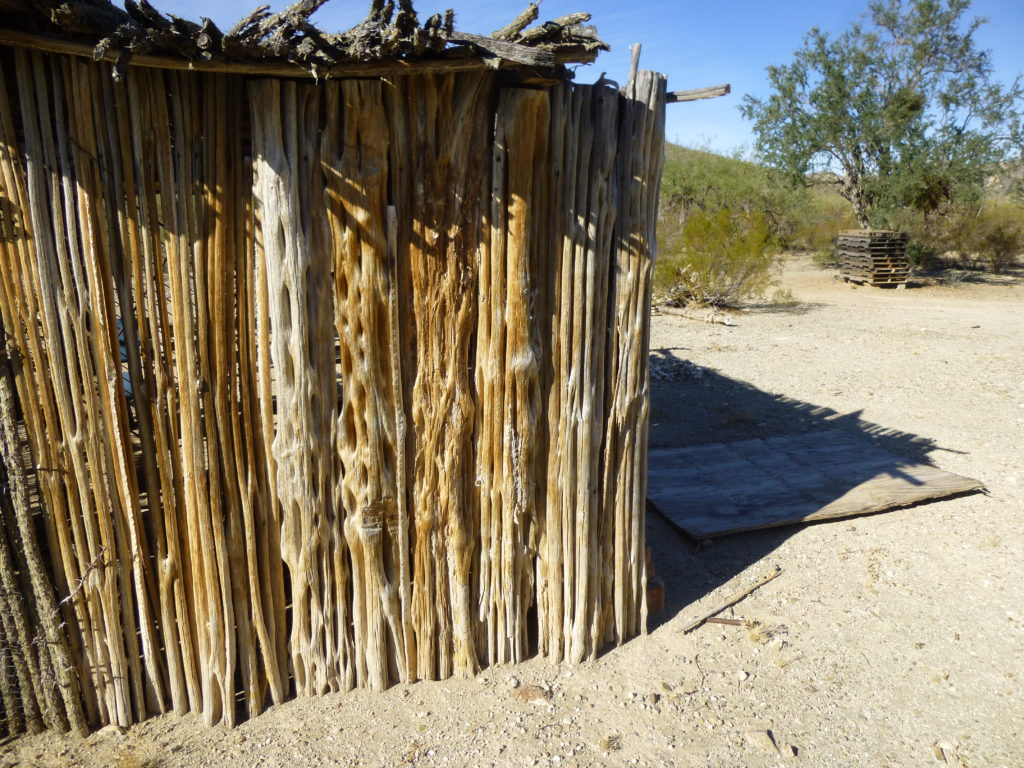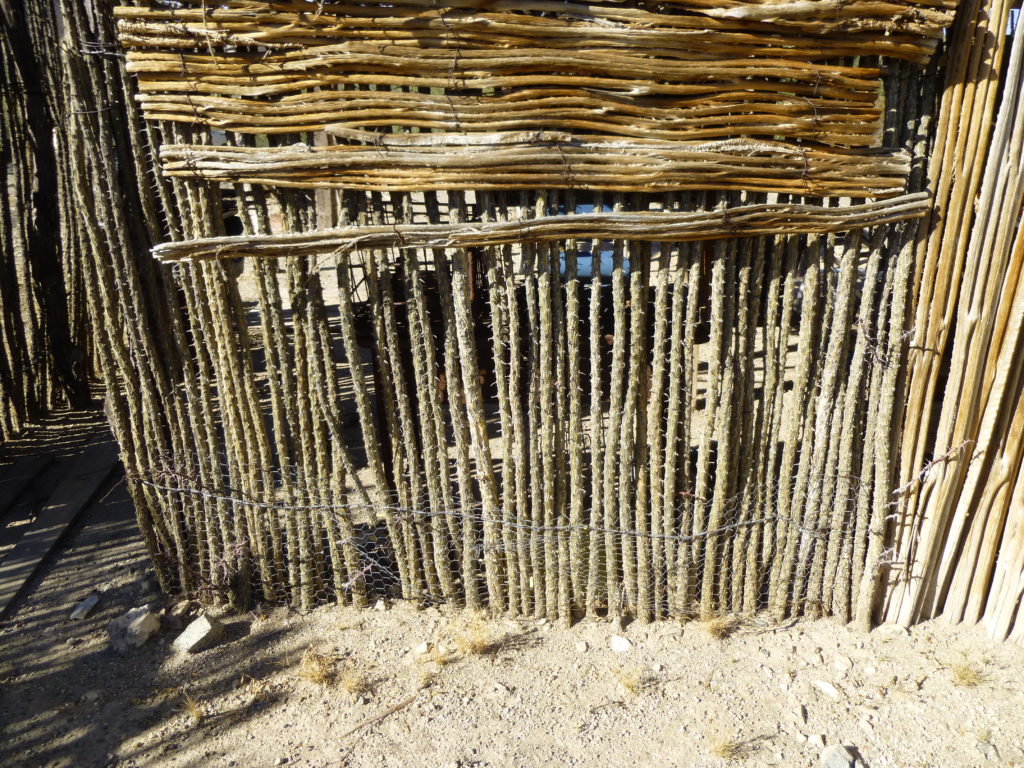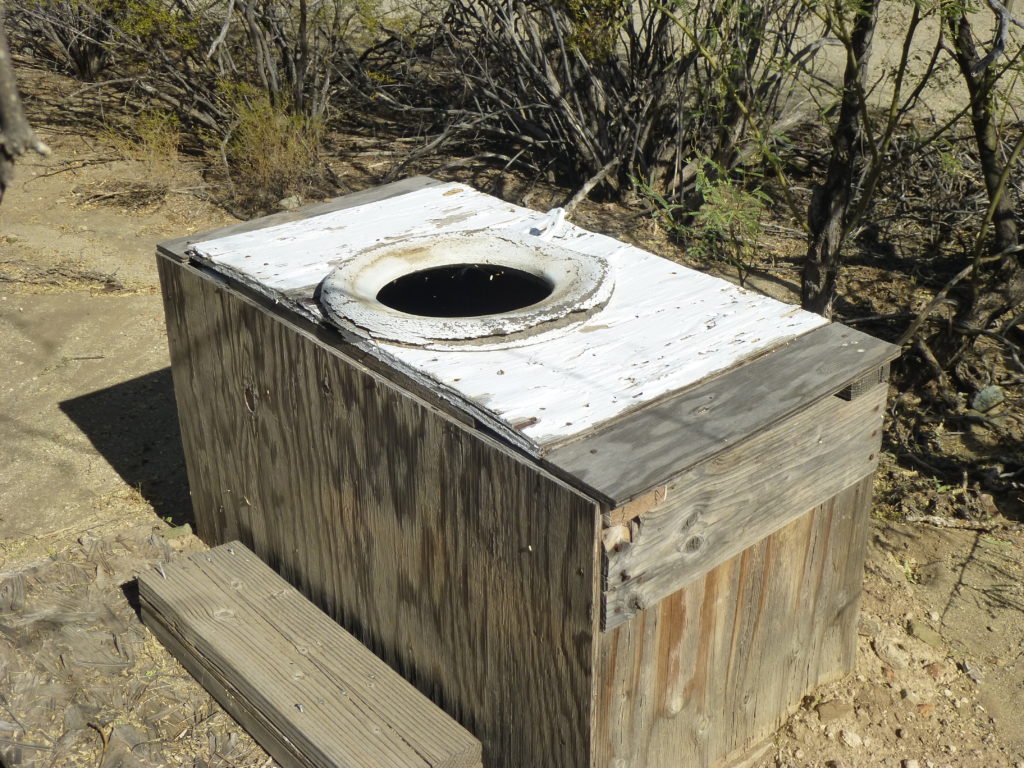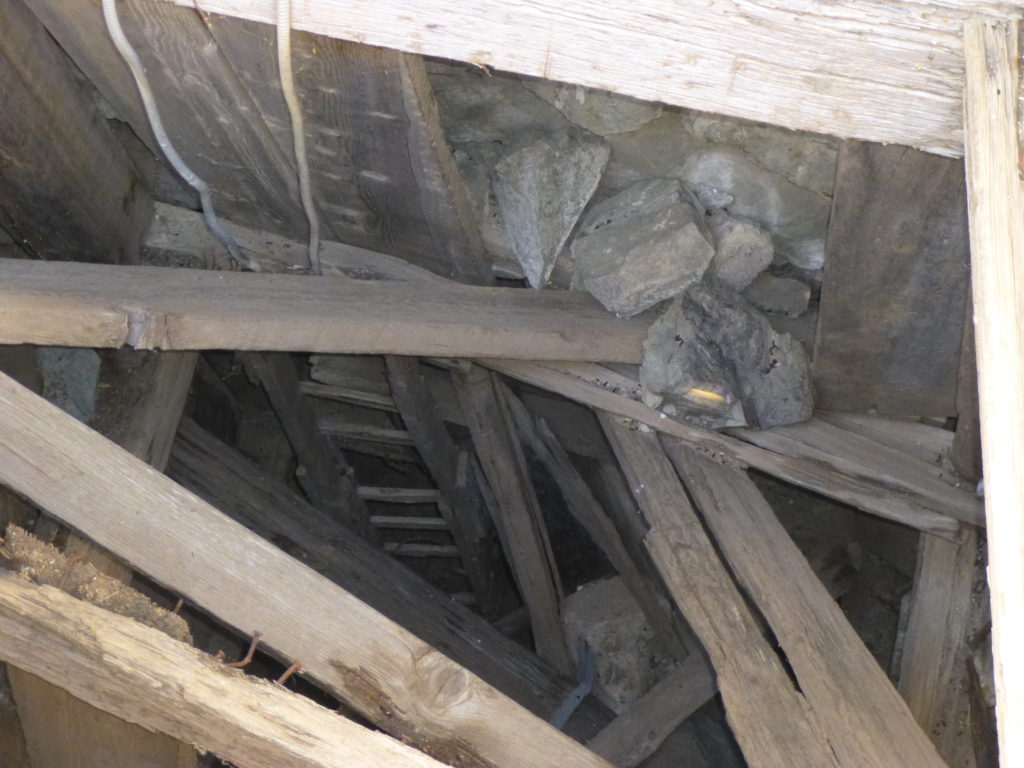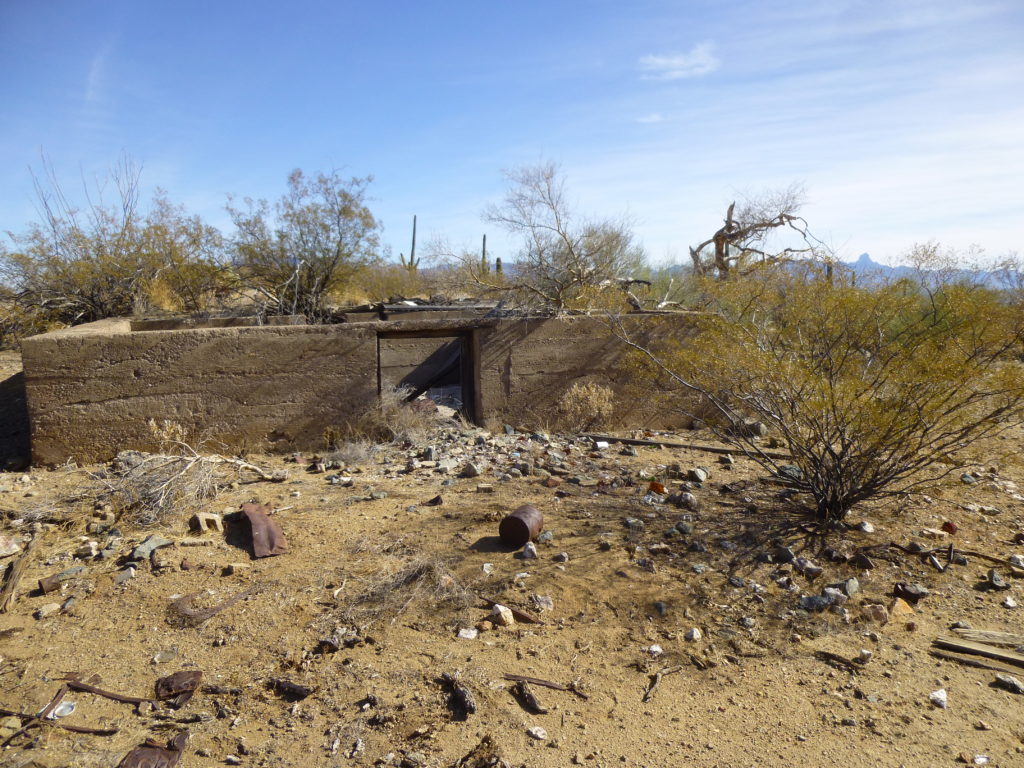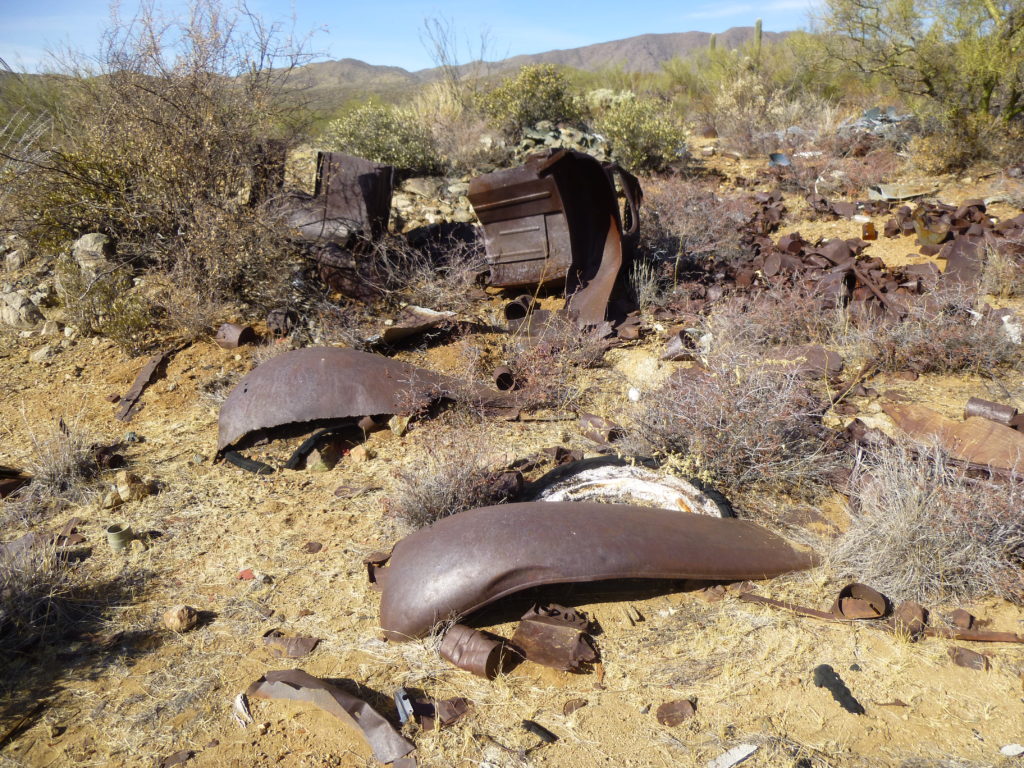The year 2017 has been an unusual one. All through September, October and November the temperatures have been way above normal. In November, we broke many of our old records for the daytime high temperature here in Tucson. The month of November shattered its old record for heat – the temperature, averaged out on a 24-hour basis, was SIX degrees higher than it had ever been in well over 100 years of record-keeping. That’s insane – to break it by one degree, maybe two, could be expected, but six!!! Not only was it the hottest November ever, but also the driest. The total rainfall at my little weather station was precisely 0.00 inches for the month. In fact, the rainfall at my home has totaled a mere 0.04 inches for the past 4 months.
In early December, I headed out to do some climbing. I thought that if I left home by 1:30 PM after work, I’d be able to get one small climb done by nightfall with time to spare. Things didn’t work out quite as I had expected, though. By the time I reached the small town of Santa Rosa, it was already three o’clock. I still had to drive about 6 miles of dirt road to the east to get in close to my peak.
The Santa Rosa Valley averages about 8 miles in width and is quite devoid of rock outcrop. It is very flat and its floor is an extremely fine-grained soil – any amount of driving on this churns it into a mess much like talcum powder. I hadn’t gone but a quarter-mile from the pavement when I found myself having to stop and put the truck into four-wheel-drive. The road was flat and straight, but the fine powder lay a foot deep upon it – it was all I could do to keep moving along in the ruts established by others. Three miles from the town, I was stopped dead in my tracks by a deep gully which couldn’t be driven across, so I had to backtrack. Luckily, I found another track to the south which eventually, but barely, took me to Mule Shoe Tank. There, I found a large bulldozer which had been moving a lot of dirt around, probably in an effort to bolster the tank’s ability to hold water. It bore a sticker indicating it was owned by the Tohono O’odham Nation.
A mile east of the tank, I parked in a spot where I lost the road. The day was wearing on, so I quickly readied my day pack and set out on foot at 4:20 PM. I went like a bat out of hell, and covered the mile and a half to my summit in only 35 minutes. There I was on top of Rosa Benchmark, elevation 2,284 feet. I found the benchmark itself and a bit of surveyor’s trash from 81 years ago, but otherwise no sign that any climber had ever visited since.
As I stood on the summit, I couldn’t help but notice the elephant in the room – Gu Achi Peak stood over 2,200 vertical feet above me. There are desert bighorn sheep up there.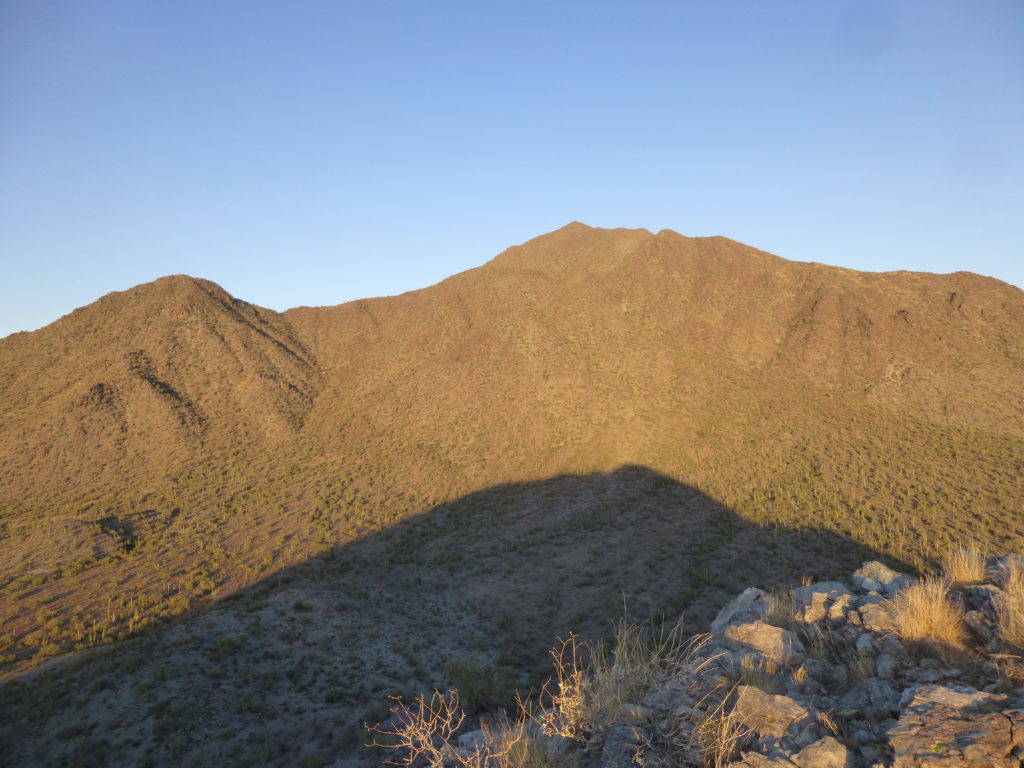
I spent a mere 10 minutes on top, leaving a register and sending a “here’s where I am” message to my friends via my Delorme satellite device. When I was ten minutes below the summit, the sun set.
Picking up the pace, I half walked and half jogged back to my truck by 5:35, where I managed a call home. Cold fare for supper in the cab of my truck, then to bed. During the night, I was awakened more than once by nearby horses whinnying while I froze my ass off (the weather had finally turned). The morning sun felt awfully good.
The 6-mile drive back out was like plowing through a dust storm, so much so that by the time I reached pavement I had to stop and attempt to clean off my headlights and windshield before continuing. Fifty miles later, I had driven into the South Comobabi Mountains. This is a range that I’d climbed out many years ago, but today I was back to do one more, a small summit that had slipped through the cracks. It was an easy 600-foot climb to the top of Peak 3383, where I left a register. Here’s the summit.
Back down, near my truck, I found something I’ve seen hundreds of times – black Mexican water jugs. An industrious border-crosser had left these on the ground. They were joined by a a strip of blanket (for carrying around your neck), and one of them was wrapped in cloth. I’m not sure what purpose that serves – to protect the bottles against hard knocks; to insulate them; to disguise them in camouflage cloth?
One cold and rainy April day back in 2001, Dave Jurasevich and I were climbing peaks near South Mountain. We stumbled upon a place that puzzled us at first, but soon figured it out. It was an unusual type of camp, and I had just found another one like it today, over 16 years later. So let me lead into that by first telling you a bit about a special custom of the Tohono O’odham people.
In this ancient culture, the months of the year are named after seasonal features and activities that play an important part in their lives. Their traditional year starts in the month of June, which is named in their language Hahshani Bahithag Mashath meaning “The Saguaro Cactus Fruit Month”. The fact that they start their new year with that activity, the gathering of the fruit, speaks volumes.
The white blossoms of the saguaro cactus (it is Arizona’s state flower) bloom in April and May, and appear on the ends of the arms, or on the very top of the main trunk. Each flower is pollinated at night by bats. By June, the pollinated flowers have produced fruit, which is ready to harvest.
Saguaros grow very slowly. One that is five years old is only a few inches tall. They don’t even flower until they are 40 or 50 years old. One with many arms is probably at least 200 years old. An average whole fruit contains 34 calories. A serving of five fruits has 4 grams of protein and 5 grams of fat and is high in soluble fiber and Vitamin C.
If you are going to gather fruits from saguaro cacti, it would be easier if they were not too tall – the taller they are, the harder it is to reach the fruits. The next picture shows the progression of how a bud forms into a flower, and then once it is pollinated it becomes a fruit which ripens, opens and eventually falls off the cactus.
Here is some information from a site called “StoryTrail.com”:
“Ha:sañ Bak signals the beginning of the rainmaking ceremony. Ha:sañ is the O’odham word for saguaro cactus. Ha:sañ Bak means “the saguaro is ready.” Before harvesting the first fruits, Tohono O’odham bless themselves with the saguaro fruit (taken from a fallen fruit). The fruit is rubbed on the body near the heart. The fruit picker asks for a clear mind and a good heart before going out into the desert.
The saguaro fruits are called bahidaj. When ripe, the fruit opens to expose the sweet red meat and hundreds of tiny black seeds. Harvesters knock or pull the fruits off the tops of the tall saguaros. The Tohono O’odham place the first fruit picked on the ground with the red side facing the sun once the red meat of the bahidaj is removed. This signifies that the sun will draw up the moisture from the fruit into the sky, to make the clouds and the rain.
Saguaro ribs are used for harvesting poles called kukuipad. The ribs are collected in April and May and are saved from year to year. To make longer poles, two saguaro ribs can be grooved to fit together or can be tied together. A cross bar made of segai (greasewood) is tied at a 45-degree angle near the top of the pole. The completed poles are tied to a tree while they await the harvest.”
And here is some additional information from the National Park Service, from their resource brief on the Tucson Mountain District:
“The Tohono O’odham people have a complex, interdependent relationship with the Saguaro. It has a cosmological foundation that includes the saguaro once being human, a feature which the Tohono O’odham still recognize today. The fundamental importance of the Saguaro and its fruit in O’odham life is reflected in the O’odham calendar. The O’odham divide the year into 13 lunar “months,” starting with Hashañi Mashad, or Saguaro [harvest] month. The Saguaro fruit wine-imbibing ceremony to bring the summer monsoon doubled as the O’odham New Year’s celebration. The temporal regularity of the saguaro fruit harvest made syrup for Saguaro fruit wine making available during the latter half of June. Because the O’odham processed ripe fruits into thickened syrup which could be stored for a while before fermentation, the actual date of the New Year could vary during the first half of July, depending on the end of the harvest and the beginning of the monsoon. The Tohono O’odham people use the flowers, fruit, seeds, thorns, burls or boots, and ribs of the saguaro for food, ceremonies, fiber, manufacture, trade, and unspecified needs. The Tohono O’odham people use the fruit and seeds to make a variety of food products including ceremonial wine that is use in the Navai’t, and the Vikita, or harvest ceremony. After a saguaro died, the Tohono O’odham people used the ribs and ‘boots’ that were once nest holes for a variety of structures, tools, instruments, and other useful objects. They also used the fruit and seed products as trade items with the neighboring Pima tribes. Other people and tribes have been documented using the saguaro including the Western Apache bands, the Hualapai, Yavapai, Maricopa, Pima, Seri, and Yuman speakers and southwest tribes in general. These groups used the fruit, seeds, thorns, burls or boots, and ribs of the saguaro for food, medicine, ceremony, fiber, manufacture, trade, and unspecified needs. Traditionally the saguaro harvest was a village-oriented activity conducted by women but as cultural changes occurred over the last 500 years, it became family-based. Where villages once had saguaro groves recognized as theirs, families came to be associated with specific groves. Trespass was frowned upon but ‘ownership’ was not enforced. On the Tohono O’odham Reservation, the family-based groves and camps are veiled in privacy. For harvesting the saguaro fruit, a pole is constructed from 2 or 3 long ribs from a dead saguaro lashed together, with cross-pieces of catclaw (Acacia greggii), creosote bush (Larrea tridentata), or saguaro rib fixed on the end. The pole is called kuipad, and is a strong, light pole perfect for reaching to the top of the taller saguaros. The pole, which may be from 15 to 30 feet long, can be used to hook the fruits or nudge them off the plant. The fruit is then collected off the ground. Pulp is scraped from the fruit pods into buckets for carrying back to camp. An experienced harvester may collect 12 to 20 pounds of pulp in two to three hours. It takes 20 to 30 pounds of fruit to produce a gallon of syrup. The fruit is mixed with water and boiled over an open wood fire. It may boil for an hour or more. The boiled mixture is strained to separate the juice from the pulp and seeds and the pulp mixture is spread on a tarp or board to dry. The dry pulp is then pounded to remove the seeds. The dry pulp is added to boiling syrup to make jam; the seeds are used for meal.
One fruit harvest participant wrote of good camp manners and of sensuous pleasure: “You eat the perfect ones [saguaro fruit] on the spot, turning your back to the other harvesters. You chew the oily seeds into thick syrup before you swallow. It feels luscious and wicked, but no one says anything back in camp. Everyone’s mouth is pink and sticky.”
Here are some instructions on how to prepare saguaro syrup:
Into the bowl or pan, add as much water as you have saguaro pulp. Plunge your hands in and break up the clumps as much as possible. Let the fruit soak for six to eight hours, then use a fine wire-mesh strainer to strain all the liquid into a large pot. Boil the liquid until it is reduced by half for juice; reduce it further for syrup. Skim and discard the froth and impurities that rise during the boiling. If you want to make syrup, add ½ cup sugar and ½ teaspoon cornstarch for each cup of concentrated juice. Boil until thickened.
And here is some information on preparing the saguaro seeds:
Spread the seeds remaining from the juice preparation on a large flat pan or tray and dry them in the sun. The washed-out pulp on the seeds will dry whitish. When the seeds are dry, break them up into a bowl of water. Vigorously shake the seeds; the white dried pulp will rise to the top and can be skimmed off. Store the seeds in a can or jar with a tight-fitting lid. Use as you would poppy seeds. Two tablespoons of dried saguaro seeds have 74 calories.
So, that’s a lot of information about saguaro fruit and how to prepare juice and the seeds. I wanted to tell you all of this as background, because today I had stumbled across a camp used by O’odham people to harvest the fruit and prepare the syrup. I won’t give away the location, out of respect for the family who used it, but I do want to share with you some of the things I saw there. Leaning up against this old windmill is a long pole. It is made from 4 saguaro cactus ribs tied together, and is used to knock the fruit off of tall saguaros.
In addition to those long poles, there were stacks of firewood, a large metal kettle for cooking the fruit, and a nice structure for shade and sleeping.
This structure was very cool – here is a close-up of how it’s made. Those are saguaro ribs and trunks making up the wall.
Ocotillo ribs made up other parts of walls, and also the roof.
Inside the structure were cooking utensils, bed-springs and chairs. Oh, and one more thing that was essential for a comfortable stay.
I became excited when I learned about these traditions, so much so that I have decided to go into the desert in the summer of 2018 and harvest saguaro fruit and prepare my own syrup and collect the seeds.
On the same day that I found the camp, I also visited an abandoned mine nearby. Plenty of underground activity had taken place there.
It seems like the place had been a going concern back in the day, based on the number of buildings which had once stood there.
I love finding old cars in these places, like these – or should I say, in this case, parts of old cars. These were from the 1930s.
The Arizona deserts are filled with fascinating places like this, all worth visiting. Thanks for coming along to share the ride.

